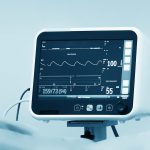EUROPE (EU)
MDCG 2021-22 rev.1 – Clarification on “first certification for that type of device” and corresponding procedures to be followed by notified bodies
This document has been endorsed by the Medical Device Coordination Group (MDCG) established by Article 103 of Regulation (EU) 2017/745. The MDCG is composed of representatives of all Member States and it is chaired by a representative of the European Commission.
MDCG 2022-15 – Guidance on appropriate surveillance regarding the transitional provisions under Article 110 of the IVDR
Article 110(2) and 110(3) of Regulation (EU) 2017/746 on in vitro diagnostic medical devices (IVDR) state that devices which are covered by valid certificates issued by a notified body under the Directive 98/79/EC on in vitro diagnostic medical devices (IVDD) may be placed on the market1 or put into service2 after the date of application of the IVDR and no later than 26 May 2025 under certain conditions.
Manual on Borderline and Classification in the Community Regulatory Framework for Medical Devices
The Manual should be read in conjunction with other documents providing guidance on borderline, such as MDCG 2022-5 Guidance on borderline between medical devices and medicinal products under Regulation (EU) 2017/745 on medical devices and MDCG 2019-11 Qualification and classification of software – Regulation (EU) 2017/745 and Regulation (EU) 2017/746.
UK (MHRA)
MHRA appoints first new UK Approved Body to certify medical devices since Brexit
The Medicines and Healthcare products Regulatory Agency (MHRA) has confirmed that DEKRA Certification UK Ltd has now joined the three current UK Approved Bodies, increasing the UK’s capacity to process conformity assessments for medical devices to ensure safe and effective devices reach the UK public.
Medical devices: software applications (apps)
This guidance document replaces the previous MHRA guidance titled “medical device standalone software, including apps”. As well as medical device apps becoming a growth area in healthcare management in hospital and in the community settings, the role of apps used as part of fitness regimes and for social care situations is also expanding.
USA (FDA)
Clinical Performance Assessment: Considerations for Computer-Assisted Detection Devices Applied to Radiology Images and Radiology Device Data in Premarket Notification (510(k)) Submissions
This guidance document provides FDA’s recommendations on clinical performance assessments to support premarket notification (510(k)) submissions for computer-assisted detection (CADe) devices applied to radiology images and radiology device data. This guidance applies to CADe devices, including when a CADe device is part of a combined system, such as the detection portion of combined computer-aided detection and diagnostic devices.
For more information, please find the link below.
https://www.fda.gov/media/77642/download
Clinical Decision Support Software
This guidance clarifies that FDA’s existing digital health policies continue to apply to software functions that meet the definition of a device, including those that are intended for use by patients or caregivers. Additionally, the guidance provides examples of how FDA applies the Non-Device CDS criteria.
For more information, please find the link below.
https://www.fda.gov/media/109618/download
Computer-Assisted Detection Devices Applied to Radiology Images and Radiology Device Data – Premarket Notification [510(k)] Submissions
This guidance document provides FDA’s recommendations regarding premarket notification (510(k)) submissions for computer-assisted detection (CADe) devices applied to radiology images and radiology device data. This guidance applies to CADe devices, including those marketed as a complete package with a review workstation, or as add-on software embedded within imaging equipment, as an image review platform, or other imaging accessory equipment.
Display Devices for Diagnostic Radiology
This guidance document provides FDA’s recommendations regarding premarket notification (510(k)) submissions for display devices intended for use in diagnostic radiology. This guidance applies to display devices intended for diagnostic radiology as identified by their classification regulation (21 CFR 892.2050) and product codes.
For more information, please find the link below.
https://www.fda.gov/media/95527/download
Medical Device Data Systems, Medical Image Storage Devices, and Medical Image Communications Devices
FDA is issuing this guidance to communicate how the Agency intends to apply its regulatory oversight to medical device data systems (MDDS), medical image storage devices, and medical image communication devices.
For more information, please find the link below.
https://www.fda.gov/media/88572/download
Policy for Device Software Functions and Mobile Medical Applications
FDA is issuing this guidance to communicate how the Agency intends to apply its regulatory oversight to certain software, including device software functions and mobile medical applications (MMAs) intended for use on mobile platforms or on general-purpose computing platforms. FDA intends to apply its regulatory oversight to those device software functions that meet the definition of a medical device and whose functionality could pose a risk to a patient’s safety if the device were not to function as intended.
Electronic Submission Template for Medical Device 510(k) Submissions
This guidance provides the further standards for the submission of premarket notification (510(k)) submissions by electronic format, a timetable for establishment of these standards, and criteria for waivers of and exemptions from the requirements to meet a statutory requirement. This guidance is also intended to represent one of several steps in meeting FDA’s commitment to the development of electronic submission templates to serve as guided submission preparation tools for industry to improve submission consistency and enhance efficiency in the review process.



